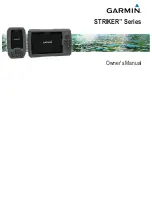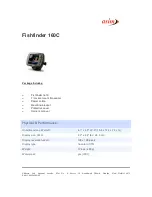
120
to change the first character, then press
→
to the next character and
repeat until the distance is correct.
4. When your adjustments are finished, return to the last page dis-
played by repeatedly pressing
EXIT
.
Auto Satellite Search
To lock onto the satellites, the GPS receiver needs to know its current
position, UTC time and date. (Elevation (altitude) is also used in the
equation, but it's rarely required to determine a position.) It needs this
data so that it can calculate which satellites should be in view. It then
searches for only those satellites.
When your GPS receiver is turned on for the first time, it doesn't know
what your position or elevation (altitude) is. It does know the current UTC
time and date since these were programmed into it at the factory and an
internal clock keeps the time while the unit is turned off. (If the time
and/or date are incorrect, you can set it using the "Set Local Time" menu.)
The unit begins searching for the satellites using the above data that it
acquired the last time it was turned on. This probably was at the fac-
tory. Since you almost certainly aren't at our factory, it's probably
looking for the wrong satellites.
If it doesn't find the satellites it's looking for after approximately one
minute, the unit switches to Auto Search. The receiver looks for any
satellite in the sky. Due to advanced technology, the auto search time
has shrunk significantly from the early days of GPS.
Once the unit locks onto the satellites, it should take less than a minute to
find your position the next time it's turned on, provided you haven't moved
more than approximately 100 miles from the last location it was used.
GPS Auto Search on the Satellite Status Menu.
Содержание M68C IceMachine
Страница 8: ...vi Notes...
Страница 50: ...42 Notes...
Страница 88: ...80 Notes...
Страница 114: ...106 Notes...
Страница 166: ...158 Notes...
Страница 169: ...161 Notes...
Страница 170: ...162 Notes...

































